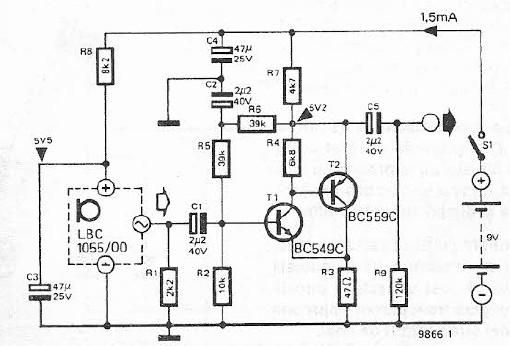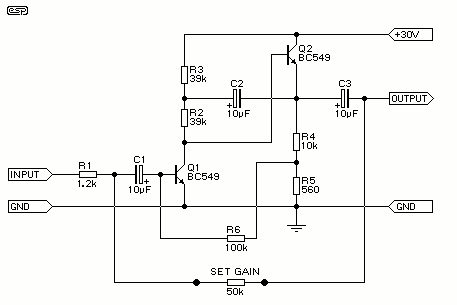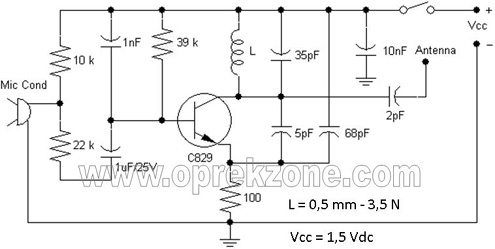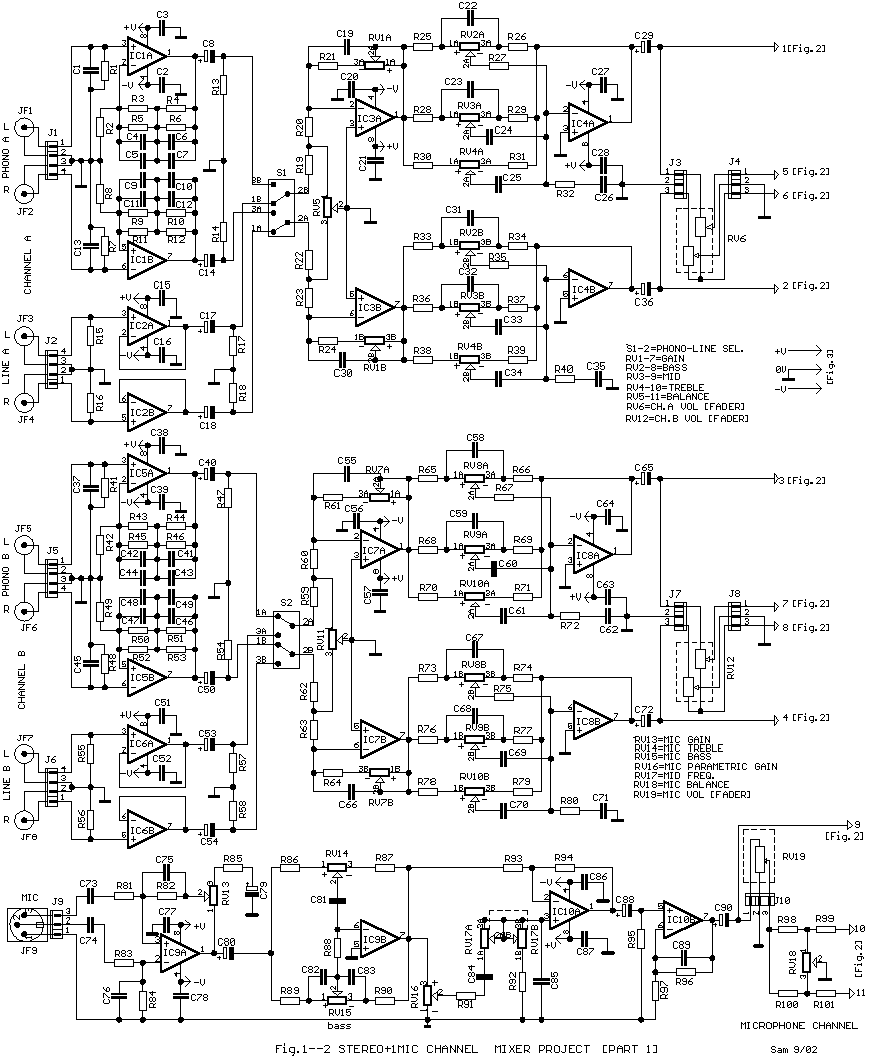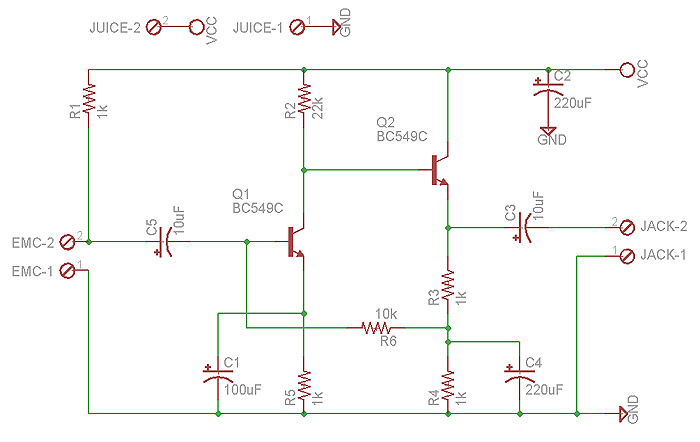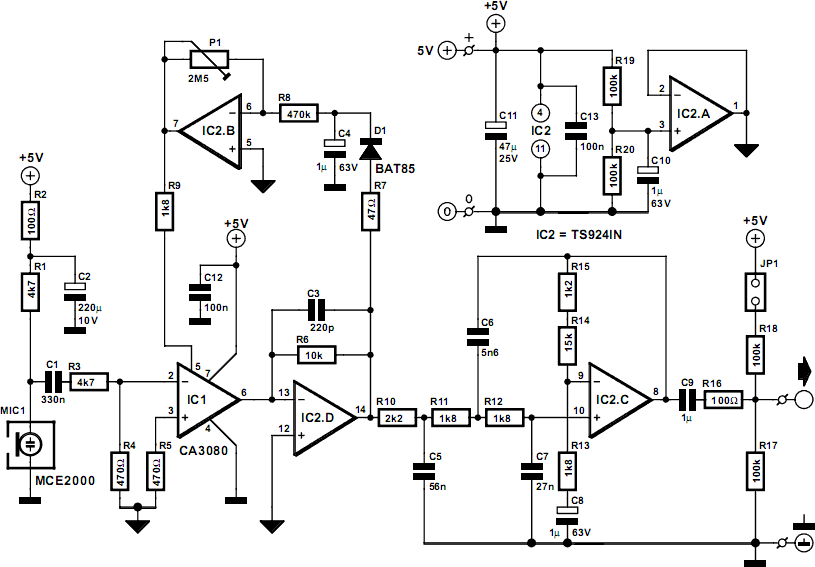
microphone Microtech Gefell UM 92.1 S
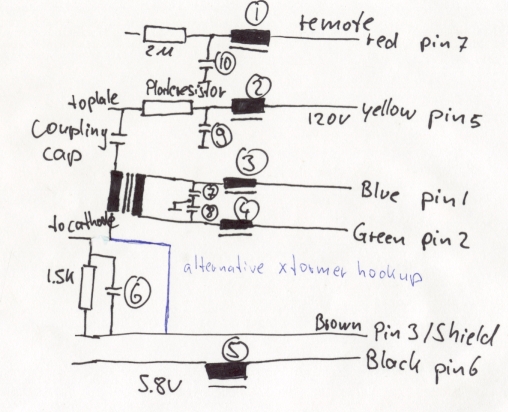
The M7 capsule features a center-terminated, dual-diaphragm design and supports three polar patterns. A switch on the power supply allows for the selection of Cardioid, Figure-of-8, or Omnidirectional patterns. The amplifier circuit is reminiscent of Gefell's historical models, the CMV 563 and UM 57, but has been modernized with updated components. The tube is an EF 86 pentode, reportedly of Russian origin, and is wired in a triode configuration. Gefell microphones, including the M92.1S and UM92.1S, are equipped with RF/EM protection circuits to meet CE compliance. Although US regulations regarding electromagnetic radiation are less stringent, Gefell does not provide circuits specifically for the US market. According to Oliver Archut of TAB-Funkenwerk, these EMI protection circuits can alter the sound and introduce phase shifts. He has provided guidance for removing the EM/RF circuitry from the UM92.1S. Modifications suggested by Oliver include clipping the 1.5k resistor and grounding the cathode wire, installing a Telefunken EF86 tube with a hilumin shield, and using the same transformer found in the UM75. The microphone is delivered in a metal suitcase and includes a dedicated power supply (part number UN 920.1), power cable (part number C 92.1), elastic suspension mount (part number EA 92), and gray foam windscreen (part number W 92). It is noteworthy that the frequency-response graphs available on the MTG website for the UM92.1S (and M92.1S) are identical to those of the UM75, UMT70S, and MT71S, despite significant variations in topologies, circuitry, and headbasket designs among these microphones. The graphs linked below represent samples from an individual UM92.1S, providing a more accurate prediction of this microphone's performance. The UM92.1S is characterized by a rich, rounded tone with considerable midrange complexity and a robust low end. It offers ample presence without harshness, and the high frequencies are smooth yet detailed. Overall, the UM92.1S is highly versatile and suitable for a wide range of applications typically associated with large-diaphragm tube microphones.
The M7 capsule's design, with its dual-diaphragm structure, facilitates the capture of sound from various angles, enhancing its versatility in different recording environments. The ability to switch between polar patterns allows users to tailor the microphone's response to specific acoustic situations, whether it be for solo instruments, vocals, or ensemble recordings. The updated amplifier circuit maintains the essence of classic Gefell designs while incorporating modern components that improve reliability and performance.
The EF 86 pentode tube, known for its low noise and high gain characteristics, enhances the microphone's sensitivity and dynamic range. The triode configuration further optimizes the signal path, contributing to the warm tonal qualities for which tube microphones are celebrated. The inclusion of RF/EM protection circuits ensures compliance with European standards, although the potential impact on sound quality has been noted by industry experts. The modifications proposed by Oliver Archut offer a pathway for users seeking to refine the microphone's sonic signature, emphasizing the importance of customization in professional audio applications.
The microphone's packaging and included accessories reflect a commitment to quality and user convenience. The metal suitcase provides protection during transport, while the dedicated power supply and cables ensure compatibility and ease of use in studio settings. The elastic suspension mount and foam windscreen are essential for minimizing handling noise and wind interference, respectively, further enhancing the microphone's performance in various recording scenarios.
In summary, the M7 capsule and its associated microphone models represent a blend of historical craftsmanship and contemporary engineering, making them valuable tools for sound professionals seeking high-quality audio capture. The nuanced tonal characteristics and flexible design cater to a wide array of recording needs, ensuring that the UM92.1S remains a relevant choice in modern studios.The M7 capsule is a center-terminated, dual-diaphragm design, and supports three polar patterns. A switch on the power supply allows selection of Cardioid, Figure-of-8, or Omnidirectional patterns. The amplifier circuit is similar to some of Gefell`s historical models, the CMV 563 and UM 57, but has been updated with modern components. The tube is an EF 86 pentode, reportedly of Russian origin, wired in triode configuration. The. 1 Gefell mics, including the M92. 1S and UM92. 1S, include RF/EM protection circuits required for CE compliance. Although US restrictions on electromagnetic radiation are less strict, Gefell does not currently provide US-only circuits. According to Oliver Archut of TAB-Funkenwerk, these EMI protection circuits choke the sound and introduce phase shift.
He has provided instructions for removing the EM/RF circuitry of the UM92. 1S. See also this clarification. Using Oliver`s suggested modifications, I changed my stock UM92. 1S by: clipping the 1. 5k resistor and sending the cathode wire to ground; installing a Telefunken EF86 tube with hilumin shield; installing the same x-former that is used in the UM75. The mic ships in a metal suitcase and includes a dedicated power supply (p/n UN 920. 1), power cable (p/n C 92. 1), elastic suspension mount (p/n EA 92), and gray foam windscreen (p/n W 92). Note that the frequency-response graphs on the MTG website for the UM 92. 1 S (and M 92. 1 S) are identical to those of the UM75, UMT70S, and MT71S, despite the wild variation in topologies, circuitry, and headbasket design among those microphones.
The graphs linked below are samples from an individual UM 92. 1 S, and are therefore much more predictive of this micG ½s performance. the UM92. 1S has a fat, round tone, with a lot of midrange complexity and solid, full low end. There`s plenty of presence, but without any associated harshness. The top end is smooth, but well detailed All in all, the UM92. 1S excels at any application where you`d normally use a large-diaphragm tube mic ” I wouldn`t hesitate to use it on just about anything in the studio. 🔗 External reference
The M7 capsule's design, with its dual-diaphragm structure, facilitates the capture of sound from various angles, enhancing its versatility in different recording environments. The ability to switch between polar patterns allows users to tailor the microphone's response to specific acoustic situations, whether it be for solo instruments, vocals, or ensemble recordings. The updated amplifier circuit maintains the essence of classic Gefell designs while incorporating modern components that improve reliability and performance.
The EF 86 pentode tube, known for its low noise and high gain characteristics, enhances the microphone's sensitivity and dynamic range. The triode configuration further optimizes the signal path, contributing to the warm tonal qualities for which tube microphones are celebrated. The inclusion of RF/EM protection circuits ensures compliance with European standards, although the potential impact on sound quality has been noted by industry experts. The modifications proposed by Oliver Archut offer a pathway for users seeking to refine the microphone's sonic signature, emphasizing the importance of customization in professional audio applications.
The microphone's packaging and included accessories reflect a commitment to quality and user convenience. The metal suitcase provides protection during transport, while the dedicated power supply and cables ensure compatibility and ease of use in studio settings. The elastic suspension mount and foam windscreen are essential for minimizing handling noise and wind interference, respectively, further enhancing the microphone's performance in various recording scenarios.
In summary, the M7 capsule and its associated microphone models represent a blend of historical craftsmanship and contemporary engineering, making them valuable tools for sound professionals seeking high-quality audio capture. The nuanced tonal characteristics and flexible design cater to a wide array of recording needs, ensuring that the UM92.1S remains a relevant choice in modern studios.The M7 capsule is a center-terminated, dual-diaphragm design, and supports three polar patterns. A switch on the power supply allows selection of Cardioid, Figure-of-8, or Omnidirectional patterns. The amplifier circuit is similar to some of Gefell`s historical models, the CMV 563 and UM 57, but has been updated with modern components. The tube is an EF 86 pentode, reportedly of Russian origin, wired in triode configuration. The. 1 Gefell mics, including the M92. 1S and UM92. 1S, include RF/EM protection circuits required for CE compliance. Although US restrictions on electromagnetic radiation are less strict, Gefell does not currently provide US-only circuits. According to Oliver Archut of TAB-Funkenwerk, these EMI protection circuits choke the sound and introduce phase shift.
He has provided instructions for removing the EM/RF circuitry of the UM92. 1S. See also this clarification. Using Oliver`s suggested modifications, I changed my stock UM92. 1S by: clipping the 1. 5k resistor and sending the cathode wire to ground; installing a Telefunken EF86 tube with hilumin shield; installing the same x-former that is used in the UM75. The mic ships in a metal suitcase and includes a dedicated power supply (p/n UN 920. 1), power cable (p/n C 92. 1), elastic suspension mount (p/n EA 92), and gray foam windscreen (p/n W 92). Note that the frequency-response graphs on the MTG website for the UM 92. 1 S (and M 92. 1 S) are identical to those of the UM75, UMT70S, and MT71S, despite the wild variation in topologies, circuitry, and headbasket design among those microphones.
The graphs linked below are samples from an individual UM 92. 1 S, and are therefore much more predictive of this micG ½s performance. the UM92. 1S has a fat, round tone, with a lot of midrange complexity and solid, full low end. There`s plenty of presence, but without any associated harshness. The top end is smooth, but well detailed All in all, the UM92. 1S excels at any application where you`d normally use a large-diaphragm tube mic ” I wouldn`t hesitate to use it on just about anything in the studio. 🔗 External reference
